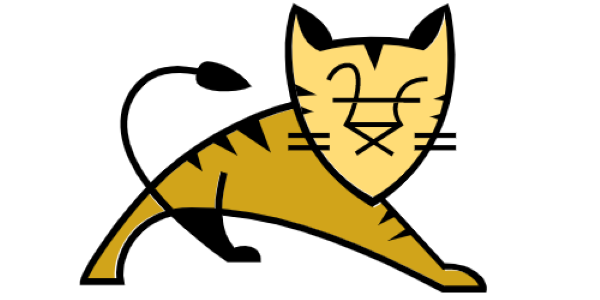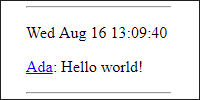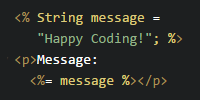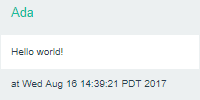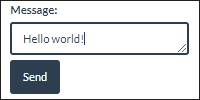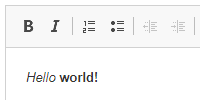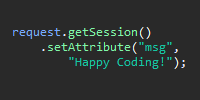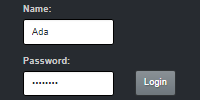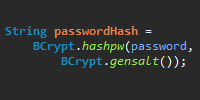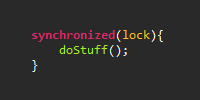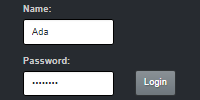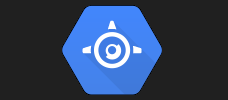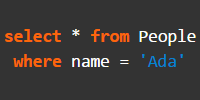Social Feed Website Part 1: Servlets
Social Feed Website Part 1: Servlets
This example uses a servlet to create a barebones example of a social feed web app like Twitter, Tumblr, or Facebook.
We’re using hard-coded example data for now, but this is the first step towards creating a more advanced web app that will actually handle real user input.
Also note that we’re outputting the HTML directly from the servlet. That can be a pain in the neck, and our lives will become much easier when we start using JSP.
import java.io.IOException;
import java.io.PrintWriter;
import java.util.ArrayList;
import java.util.Date;
import java.util.HashMap;
import java.util.List;
import java.util.Map;
import javax.servlet.http.HttpServlet;
import javax.servlet.http.HttpServletRequest;
import javax.servlet.http.HttpServletResponse;
public class FeedServlet extends HttpServlet {
/**
* All of the posts, ordered by time. Old messages at the
* beginning, new messages at the end.
*/
private List<Post> postsByTime = new ArrayList<>();
/**
* Map of user names to posts made by that user.
*/
private Map<String, List<Post>> postsByUser = new HashMap<>();
@Override
public void init(){
long now = System.currentTimeMillis();
// for fake data, add an offset so posts aren't all at the same time
long offset = 15*60*1000;
// add a bunch of fake data for testing
addPost("Ada", "Hello world!", now+offset);
addPost("Grace", "I've always been more interested in the future than in the past.", now+offset*2);
addPost("Stanley", "Meow", now+offset*3);
addPost("Stanley", "Purr", now+offset*4);
addPost("Grace", "From then on, when anything went wrong with a computer, we said it had bugs in it.", now+offset*5);
addPost("Ada", "Mathematical Science shows what is. It is the language of the unseen relations between things.", now+offset*6);
addPost("Grace", "Please cut off a nanosecond and send it over to me.", now+offset*7);
addPost("Stanley", "Growl!", now+offset*8);
}
/**
* Adds a post to the postsByTime and postsByUser data structures.
*/
private void addPost(String user, String message, long time){
Post post = new Post(user, message, new Date(time));
postsByTime.add(post);
if(!postsByUser.containsKey(user)){
postsByUser.put(user, new ArrayList<>());
}
postsByUser.get(user).add(post);
}
@Override
public void doGet(HttpServletRequest request, HttpServletResponse response) throws IOException {
PrintWriter out = response.getWriter();
String requestUrl = request.getRequestURI();
String user = requestUrl.substring("/feed/".length());
if("".equals(user)){
// the URL is just /feed/, so show all posts
out.println("<h1>All Posts</h1>");
for(Post post : postsByTime){
renderPost(post, out);
}
}
else{
// the URL is /feed/user, so show that user's posts
if(postsByUser.containsKey(user)){
out.println("<h1>Posts by " + user + "</h1>");
for(Post post : postsByUser.get(user)){
renderPost(post, out);
}
}
else{
out.println("<p>That user has no posts.</p>");
}
}
}
/**
* Renders the HTML for the Post to the response's PrintWriter.
*/
private void renderPost(Post post, PrintWriter out){
out.println("<hr/>");
out.println("<p>" + post.getDate().toString() + "</p>");
out.println("<p><a href=\"/feed/" + post.getUser() + "\" >" + post.getUser() + "</a>: ");
out.println(post.getMessage() + "</p>");
}
}
This servlet contains a couple data structures that hold user posts, and it populates them with dummy data so we can test our web app more easily. The doGet() function checks whether a user name has been supplied in the URL: if not, it just shows every post, but if so it shows the posts for that user. This is very similar to how you only see a user’s posts on their own profile, but you see every posts in the main feed.
This code also uses a Post class, which is just a Java bean:
import java.util.Date;
public class Post {
private String user;
private String message;
private Date date;
public Post(String user, String message, Date date) {
this.user = user;
this.message = message;
this.date = date;
}
public String getUser() {
return user;
}
public void setUser(String user) {
this.user = user;
}
public String getMessage() {
return message;
}
public void setMessage(String message) {
this.message = message;
}
public Date getDate() {
return date;
}
public void setDate(Date date) {
this.date = date;
}
}
Finally, it requires a web.xml file to map the URL to the servlet class:
<web-app>
<servlet>
<servlet-name>FeedServlet</servlet-name>
<servlet-class>FeedServlet</servlet-class>
</servlet>
<servlet-mapping>
<servlet-name>FeedServlet</servlet-name>
<url-pattern>/feed/*</url-pattern>
</servlet-mapping>
</web-app>
This file maps any URL starting with /feeds/ to our servlet. Now if you run this servlet and visit http://localhost:8080/feed/ in your browser, you should see this:
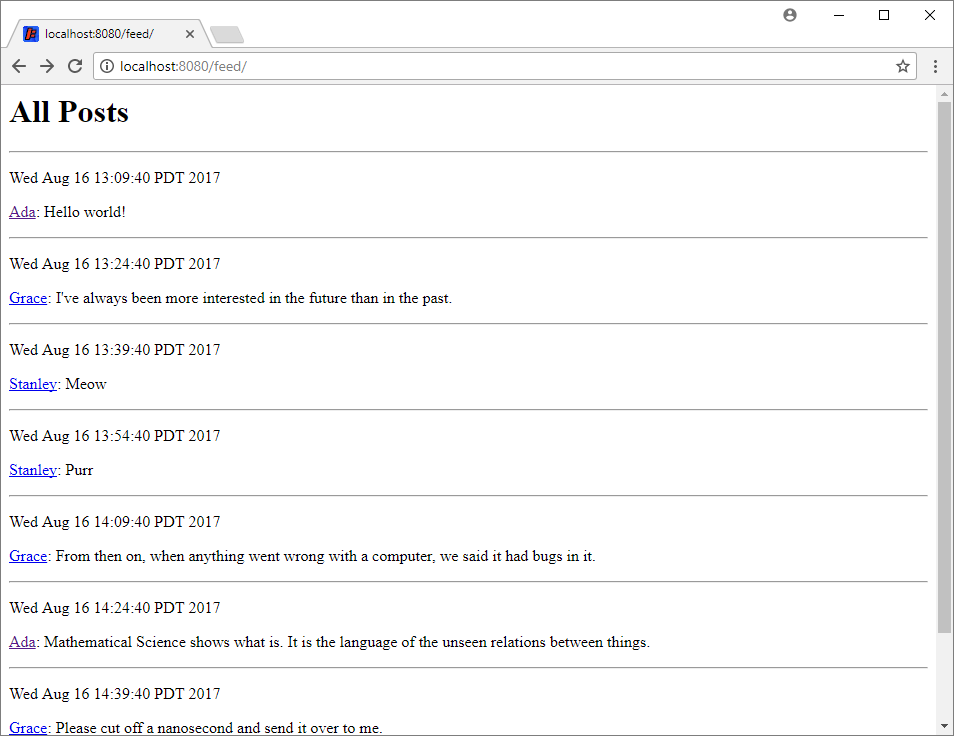
If you click one of the usernames, you’ll be taken to their profile page which only shows their posts:
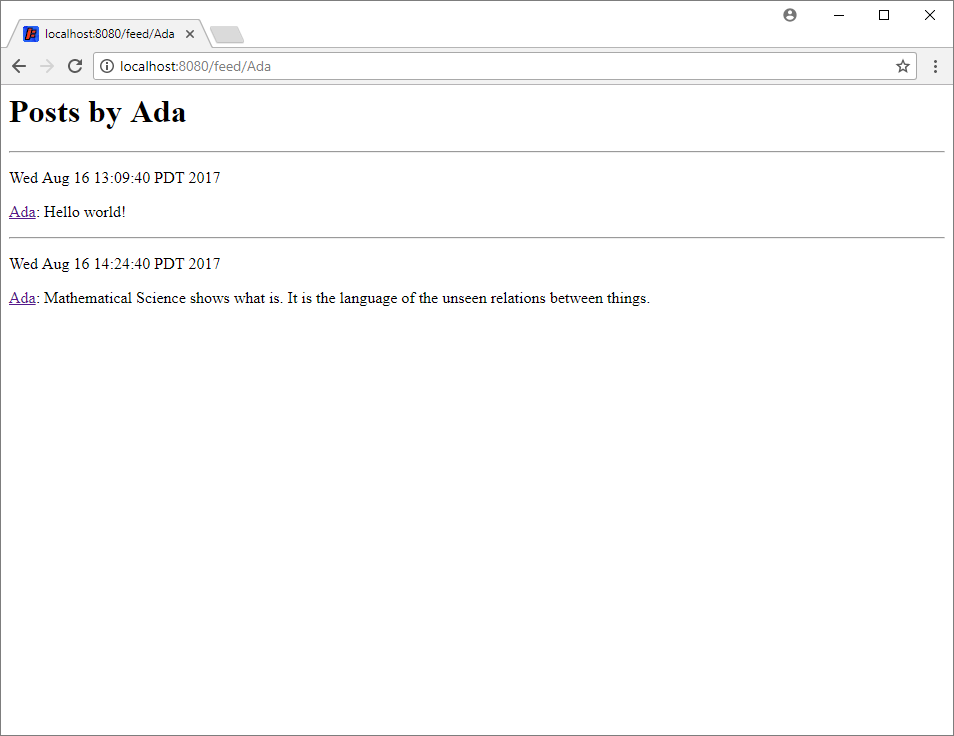
Tweak Ideas
- Show the posts in reverse-chronological order, so new posts are at the top.
- What do you want to do when a page contains millions of posts? How would you handle thousands of users?
- Modify the HTML so the site is prettier. (This will become much easier when we start using JSP.)

